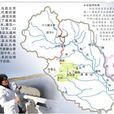水系級別(stream order)是指劃分水系支流規模大小和相互關係的等級。在1:5萬地形圖或航空照片上可以辨認出的最小水系(大於1厘米)稱為一級水系(1st order stream),兩條以上一級水系或一級水系與二級水系匯合後構成的水系稱為二級水系(2nd order stream)。這兩級水系通常接近分水嶺。兩條二級水系或二級水系與三級水系匯合後構成的水系稱為三級水系(3rdorder stream)。這種命名方法使不同圖幅上同一級別的水系可以互相比較,不會發生水系級別劃分上的錯誤。
基本介紹
- 中文名:水系級別
- 外文名:stream order
- 定義:指劃分水系支流規模大小
- 一級水系:航空照片上可以辨認出的最小水系
延伸閱讀,Going Up in Order,The Stream Order,
延伸閱讀
One of the most important aspects of physical geography is the study of the world's natural environment and resources - one of which is water. Because this area is so important, geographers, geologists, and hydrologists alike use stream order to study and measure the size of the world's waterways.
A stream is classified as a body of water that flows across the Earth's surface via a current and is contained within a narrow channel and banks.
Based on stream order and local languages, the smallest of these waterways are also sometimes called brooks and/or creeks. Large waterways (at the highest level the stream order) are called rivers and exist as a combination of many tributary streams. Streams can also have local names such as bayou or burn.
Going Up in Order
When studying stream order, it is important to recognize the pattern associated with the movement of streams up the hierarchy of strength. Because the smallest tributaries are classified as first order, they are often given a value of one by scientists (shown here). It then takes a joining of two first order streams to form a second order stream. When two second order streams combine, they form a third order stream, and when two third order streams join, they form a fourth and so on.
If however, two streams of different order join, neither increases in order. For example, if a second order stream joins a third order stream, the second order stream simply ends by flowing its contents into the third order stream, which then maintains its place in the hierarchy.
The Importance of Stream Order
This method of classifying stream size is important to geographers, geologists, hydrologists and other scientists because it gives them an idea of the size and strength of specific waterways within stream networks- an important component to water management. In addition, classifying stream order allows scientists to more easily study the amount of sediment in an area and more effectively use waterways as natural resources.
Stream order also helps people like biogeographers and biologists in determining what types of life might be present in the waterway. This is the idea behind the River Continuum Concept, a model used to determine the number and types of organisms present in a stream of a given size. Different types of plants for example can live in sediment filled, slower flowing rivers like the lower Mississippi than can live in a fast flowing tributary of the same river.
More recently, stream order has also been used in geographic information systems (GIS) in an effort to map river networks. The new algorithm, developed in 2004, uses vectors (lines) to represent the various streams and connects them using nodes (the place on the map where the two vectors meet). By using the different options available in ArcGIS, users can then change the line width or color to show the different stream orders. The result is a topologically correct depiction of the stream network that has a wide variety of applications.
Whether it is used by a GIS, a biogeographer, or a hydrologist, stream order is an effective way to classify the world’s waterways and is a crucial step in understanding and managing the many differences between streams of different sizes.
The Stream Order
The stream order hierarchy was officially proposed in 1952 by Arthur Newell Strahler, a geoscience professor at Columbia University in New York City, in his article “Hypsometric (Area Altitude) Analysis of Erosional Topology.” The article, which appeared in the Geological Society of America Bulletin outlined the order of streams as a way to define the size of perennial (a stream with water its bed continuously throughout the year) and recurring (a stream with water in its bed only part of the year) streams.
When using stream order to classify a stream, the sizes range from a first order stream all the way to the largest, a 12th order stream. A first order stream is the smallest of the world's streams and consists of small tributaries. These are the streams that flow into and "feed" larger streams but do not normally have any water flowing into them. In addition, first and second order streams generally form on steep slopes and flow quickly until they slow down and meet the next order waterway.
First through third order streams are also called headwater streams and constitute any waterways in the upper reaches of the watershed. It is estimated that over 80% of the world’s waterways are these first through third order, or headwater streams.
Going up in size and strength, streams that are classified as fourth through sixth order are medium streams while anything larger (up to 12th order) is considered a river. For example, to compare the relative size of these different streams, the Ohio River in the United States is an eighth order stream while the Mississippi River is a tenth order stream. The world’s largest river, the Amazon in South America, is considered a 12th order stream.
Unlike the smaller order streams, these medium and large rivers are usually less steep and flow slower. They do however tend to have larger volumes of runoff and debris as it collects in them from the smaller waterways flowing into them.

